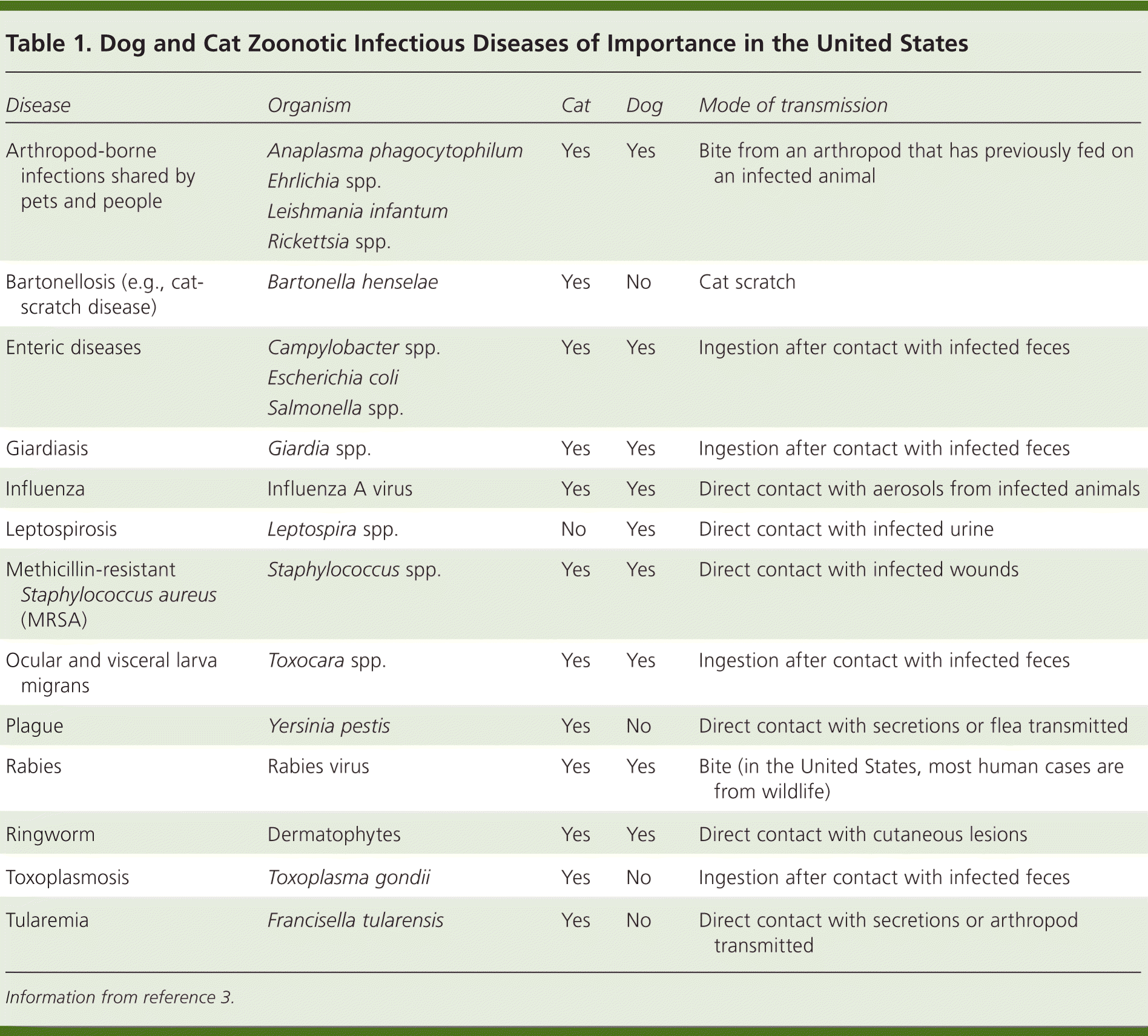
Am Fam Physician. 2016;93(5):344-346
Author disclosure: No relevant financial affiliations.
The One Health initiative is an old concept that has been reinvented and prioritized for the 21st century. The underlying principle of the initiative is that physicians and veterinarians should work collaboratively for optimal global human and animal health. Such collaboration crosses medical, scientific, and sociopolitical subdisciplines, and thus creates more efficient and productive outcomes in disease control, and maximizes the benefit of increasingly scarce financial resources in health care. The recognition that humans and animals closely share the same environment has resulted in what is known as the One Health triad, which links human and animal health with the health of the environment.
Much of the recent emphasis of One Health has been on pandemic infectious disease, acknowledging that environmental changes (e.g., deforestation, climate change, incursion of people into wilderness areas) may precipitate the spread of diseases originating with wildlife to domestic animals and then to human populations. Outbreaks of Ebola virus infection, Middle East respiratory syndrome (MERS), severe acute respiratory syndrome (SARS), and avian (H5N1) and porcine (H1N1) origin influenza virus infections have focused attention on the interaction between wildlife, production animals, and humans, and highlighted the need for combined medical and veterinary approaches to address these challenges.
One Health also directly addresses the health and well-being of families by recognizing the unique role of the small companion (pet) animal. In 2010, the World Small Animal Veterinary Association (http://www.wsava.org) established a One Health Committee (http://www.wsava.org/educational/one-health-committee) with the mission of ensuring that the impact of companion animals was included in the One Health agenda.
Why do we need to consider family pets? In recent decades, pets (primarily dogs and cats, but also a wide range of other species) have assumed increasing importance in our lives. In the United States alone, recent estimates suggest that there are 70 to 80 million pet dogs and 74 to 96 million pet cats living in up to 47% and 37% of homes, respectively.1,2 One Health's immediate concern is the list of zoonotic infectious diseases that can be transmitted directly or indirectly from pets to persons in the domestic setting (Table 13 ). These viral, bacterial, fungal, and parasitic infections have been reviewed by the One Health Committee in a white paper that calls for greater routine surveillance of these infections.3 Some infections are of global importance, such as canine rabies virus infection, which is estimated to account for at least 59,000 human deaths and $8.6 billion economic loss annually.4 Other infections, such as scabies, ringworm, or salmonellosis, are well known to family physicians. However, newly emerging companion animal infections, such as bartonellosis or leptospirosis, may challenge medical and veterinary practice. A useful resource is provided by the Centers for Disease Control and Prevention, which now has an active One Health branch (http://www.cdc.gov/onehealth/).

| Disease | Organism | Cat | Dog | Mode of transmission |
|---|---|---|---|---|
|
|
|
|
|
|
|
|
|
|
|
|
|
|
|
|
|
|
|
|
|
|
|
|
|
|
|
|
|
|
|
|
|
|
|
|
|
|
|
|
|
|
|
|
|
|
|
|
|
|
|
|
|
|
|
|
|
|
|
|
|
|
|
|
|
In addition to infectious disease, a second aspect of One Health that is important to family physicians is the human–companion animal bond. Pets bring enormous well-being to their owners and, for some individuals (e.g., older, isolated, chronically ill, or childless persons), pets provide a major focus in life. Interaction with pets improves health and reduces health care expenditure. Pet therapy in hospitals, schools, prisons, and nursing homes has been reviewed by the One Health Committee.5
The One Health approach to family health may necessitate a widening of horizons for physicians and veterinarians. For example, when physicians take a clinical history, they can ask whether the patient has pets, the type and species of animals, the family's interaction with the pets, and whether the pets are healthy.6 Similarly, veterinarians should consider an animal's home and the type of human interaction the animal has so that they can provide appropriate advice to the pet's owner. Veterinarians may wish to advise families on safe contact with their animal if a household member is pregnant or receiving immunosuppressive chemotherapy. Occasionally, family physicians and veterinarians may find it appropriate to consult together (e.g., to tackle the increasing problem of obesity in patients and their pets). These are the types of situations that could benefit from a One Health approach for developing the best possible outcome for human and animal members of a family.
